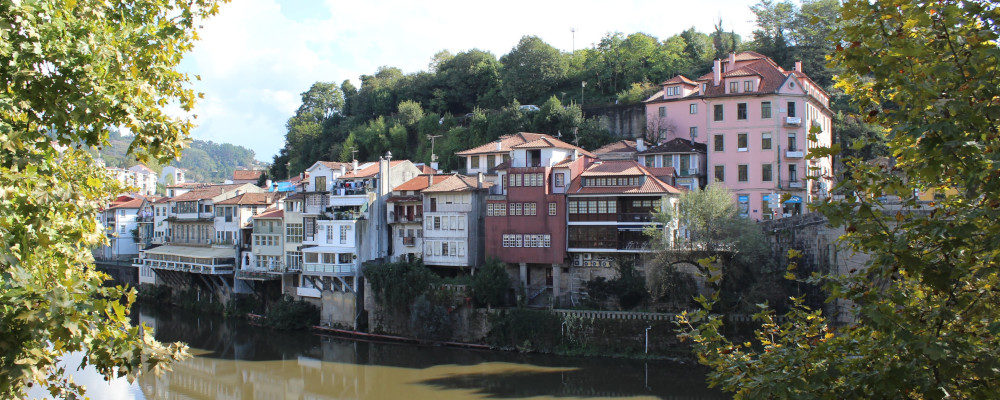The last working trip I took before COVID shut down the world was to the city of Porto and the surrounding countryside of Northern Portugal to investigate the wines of Vinho Verde.
Porto was vibrant and full of tourists. The city was having a something of a moment and it was fun to be caught up in that energy. It was the end of October, and the nights were cool and breezy from the Atlantic and the days were warm when the sun shone and balmy when the clouds came in off the ocean.
MORE SIGNAL. LESS NOISE. THE HUB NEWSLETTER.
In the wine world, Porto, which situated at the mouth of the Douro River, is best known for its namesake fortified wine, Port. It’s made from big flavoured red grapes from upriver. But while the English named Port Houses still dominate the left bank of the river with their giant 18th and 19th century warehouses, the city is itself in an entirely different wine region.
That’s Vinho Verde, known for its refreshing whites. Like Porto’s rejuvenation, the wines of Vinho Verde are changing for the better, though thankfully, they remain some of the best bargains on the wine store shelf.
Vinho Verde means “green wine,” and it was traditionally made to be drunk young. The traditional style, which can still be found, was for a low alcohol, slightly sweet and slightly fizzy and highly acidic wine. In the 21st century, like in much of Portugal, the producers of Vinho Verde are opting to make wines that fit better to modern tastes: bone dry and a bit rounder on the palate.
The Commisáo of producers, who were my hosts and paid for the trip, regulate and guarantee the quality of the region’s wines. They would like consumers to shift the meaning of Vinho Verde from green wine to wine from the green country. The region takes up the very northwest corner of Portugal, where the cooling influence of the Atlantic is evident in the greenery of its hills. Grapes are grown on the hills that make up the river valleys in this part of the country. These include the Douro itself towards the southern limit of Vinho Verde, and the Minho, which makes up the northern border of the country with Spain. Cool air from the ocean travels up the valleys and keeps the white wine grapes from over-ripening and losing acidity. There is some red wine production in Vinho Verde, but most producers concentrate on the whites.
There are six grapes that can be used to make white Vinho Verde: Alvarinho, Arinto, Avesso, Azal, Loureiro and Trajadura. Most Vinho Verde is made with Alvarinho and some combination and permutation involving some or all of the other grapes, except Avesso (see why below). Alvarinho is the same grape the Spanish call Albariño, and the Rías Baxais wine region in Galicia, Spain is literally across the Minho River from Vinho Verde.
That Portuguese left bank of the river makes up the prestigious sub-region of Monção and Melgaço, named after two nearby towns. This is the headland, as it were of Vinho Verde, and all the larger houses will make an Alvarinho and/or Alvarinho blend with grapes from Monçao and Melgaço. When made in the modern style, often as a 100 percent Alvarinho wine, they are crisp and refreshing with notes of apples and lemons, and often a bit of a salty character winos like me call “minerality.”
Moving down the coast towards Porto, the wines of the Lima subregion are often dominated by, or made exclusively with, the Loureiro grape. The Lima River Valley is known for its fogs and is considered a particularly cool climate by Portuguese standards, as it is heavily influenced by the North Atlantic. These wines are often a little bit rounder and fuller than the ones dominated by Alvarhino, and can take on characteristics of all manner of citrus fruit and sometimes floral notes.
Loureiro is also widely planted across the whole of the Vinho Verde region, and more and more wineries are either making wines from just this grape. These are making their way to Canada and if you see a wine advertising that it’s the dominant grape in the blend on the label at your local shop, it’s probably from a forward thinking producer and it may well be worth a try.
The last variety of grape from Vinho Verde that I try and keep my eyes open for is Avesso. Avesso literally means “inside out,” but figuratively it means contrary or hard to get along with. This is because, although Avesso is prized for its depth of flavour that can move into flavours of quince or stone fruits, and its ability to take treatment in oak. It is notoriously hard to grow outside of a few prize vineyards.
Most of these vineyards are in the sub-region of Baião, in the Douro Valley. Baião is almost at the Southern limit of the Vinho Verde region and fairly up river from Porto, so it enjoys a warmer climate that suits this late ripening grape. It takes well to the hard granite soil there and at the Quinta de Santa Teresa estate, perched high above the river, I saw Avesso vines rooted in the rocks that were more than 200 years old.
Baião also borders the Douro region, famous for making Port and big red table wines. This spurs both rivalry from the producers of the former and investment from the successful producers of the latter. If I see Avesso mentioned on a wine label I take it as a pretty good hallmark of quality and indicative of a wine that’s likely to be interesting.
The classic pairing with Vinho Verde is seafood, of any kind. While I was in Northern Portugal, I also drank it with all sorts of bounty from the land, especially pork; often cured hams and sausages or stews and roasts. It also works well as an aperitif with salty snacks.
As a consumer, I am pleased to report that while the quality of Vinho Verde wines is on the rise, the prices are generally not. Many excellent wines from the region are well under $20 and very good ones go for much less. This makes these white wines from Northern Portugal a pretty low risk venture and often well worth a try.
Three reputable houses that are carried more or less across this country are Aveleda, Quinta da Lixa and Soalheiro.
The Comissão de Viticultura da Região dos Vinhos Verdes has an excellent website resource that goes in much wider and deeper than this column, with information on all the regions, grapes and producers. It can be found at vinhoverde.pt.




